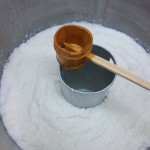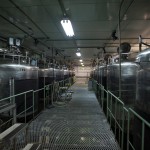-
Recent Posts
Archives
- January 2024
- December 2023
- March 2021
- February 2021
- January 2021
- December 2020
- November 2020
- August 2020
- July 2020
- June 2020
- May 2020
- April 2020
- March 2020
- December 2019
- November 2019
- October 2019
- September 2019
- August 2019
- July 2019
- June 2019
- May 2019
- April 2019
- February 2019
- January 2019
- December 2018
- October 2018
- September 2018
- August 2018
- June 2018
- May 2018
- April 2018
- January 2018
- November 2017
- October 2017
- September 2017
- August 2017
- July 2017
- May 2017
- April 2017
- March 2017
- February 2017
- December 2016
- November 2016
- October 2016
- September 2016
- August 2016
- July 2016
- May 2016
- April 2016
- March 2016
- January 2016
- December 2015
- November 2015
- October 2015
- September 2015
- August 2015
- July 2015
- May 2015
- April 2015
- March 2015
- October 2014
- September 2014
- August 2014
- July 2014
- June 2014
- May 2014
- April 2014
- March 2014
- February 2014
- January 2014
- December 2013
- November 2013
- October 2013
- September 2013
- August 2013
- July 2013
- June 2013
- April 2013
- March 2013
- January 2013
- December 2012
- November 2012
- October 2012
- September 2012
- August 2012
- July 2012
- June 2012
Monthly Archives: March 2015
Sake Buzzwords Worth Remembering
As we all move gleefully toward the inevitable World Sake Domination era, there are a handful of words that it would behoove us all to remember. And in truth, it is not all that hard to learn a few words outside our native language; it can be fun, and people do it all the time for other beverages and areas of interest.
So here are a handful of words you will see popping up again and again in the ever-increasing coverage about sake. Let’s keep it fairly simple: three sets of three words: must know, should know, and helps to know.
“Must know” words:
1. Kura: Sake is brewed in a kura. Sure, we could use the word brewery, but the sake brewing  process is different enough from the beer brewing process to justify it’s own word. Winery and distillery certainly do not apply, and while factory may apply in some cases, the term in Japanese is kura. The word sakery is a silly abomination. Note that this word (kura) can have other meanings (albeit with different characters, such as storehouse), and when it is necessary to differentiate a sake kura from another type of kura, the word sake and kura are put together, at which time the e sound of sake becomes an a: sakagura. Kura and sakagura can be used interchangeably.
process is different enough from the beer brewing process to justify it’s own word. Winery and distillery certainly do not apply, and while factory may apply in some cases, the term in Japanese is kura. The word sakery is a silly abomination. Note that this word (kura) can have other meanings (albeit with different characters, such as storehouse), and when it is necessary to differentiate a sake kura from another type of kura, the word sake and kura are put together, at which time the e sound of sake becomes an a: sakagura. Kura and sakagura can be used interchangeably.
2. Toji: A master-brewer. Behind every good sake is a good toji. The history, cultural lore, and stories of toji and their guilds can fill books and long discussions (while sipping sake). More artists and craftsmen/craftswomen than technicians, toji meld experience and intuition to guide and coax koji, yeast and rice into subtle and complex manifestations. Really, the importance of having a good toji at the reigns cannot be over-emphasized.
3. Seimai-buai (pronounced “say my boo eye”): The milling rate of rice, i.e. how much the rice has been milled before brewing. In general, the more the rice has been milled, the better the sake. Well… technically anyway. Preferences skew that assessment.
Note, the number is a bit counter-intuitive in that it expresses how much remains after milling, NOT how much was milled away. (It’s just the way the math works in the definition; no conspiracy here.) So a sake made with a rice that has a seimai buai of 45% means that the outer 55% was milled away before brewing, leaving the inner 45% behind. This is well worth remembering.
“Should know” words:
1. Kurabito: A brewer, one that works under a toji in a kura. The word literally means “person of the brewery.”
2. Koku: A traditional unit of sake equaling 180 liters. Why is this important? Because although  all kura will communicate with the government in liters and kiloliters, they speak to everyone else in koku. A very small kura, of which there are hundreds and hundreds, might make 700 to a thousand koku a year. I myself cannot assess things in kiloliters; when I look around a brewery, and count the number of kurabito, and ask how much they brew in a year, if the number comes back in kiloliters, I need to translate that into koku to get a feel for the numbers. Note, one koku equals exactly 100 of those large 1.8 liter bottles. Also, although it is the stuff of another article, originally a koku was a unit of rice used as payment and tax in Japan’s feudal days.
all kura will communicate with the government in liters and kiloliters, they speak to everyone else in koku. A very small kura, of which there are hundreds and hundreds, might make 700 to a thousand koku a year. I myself cannot assess things in kiloliters; when I look around a brewery, and count the number of kurabito, and ask how much they brew in a year, if the number comes back in kiloliters, I need to translate that into koku to get a feel for the numbers. Note, one koku equals exactly 100 of those large 1.8 liter bottles. Also, although it is the stuff of another article, originally a koku was a unit of rice used as payment and tax in Japan’s feudal days.
3. Nihonshu: the word “sake” in Japanese can refer to all alcoholic beverages as well as the rice-based brew we all know and love. When it is necessary to differentiate, the word nihonshu is used. As a bonus, the word “seishu” is the word used for sake in official legal definitions. So: sake = nihonshu = seishu.
“Helps to know” words:
1. Kuramoto: A nebulous term that can refer to either the company owning a kura, or the president of that company. Useful when talking about the people behind a particular kura, like their personality, philosophy of brewing, or their history.
2. Nihonshu-do: The specific gravity of a sake, also known as the SMV (Sake Meter Value) in English. Usually between -4 and +12, it vaguely indicates the sweetness or dryness of sake. Very vaguely. Like, really very vaguely. Just remember: Higher is dryer. It is very commonly seen on sake labels these days, either as Nihonshu-do or SMV.
3. Nama: Nama means raw, or unprocessed, or that nothing has been done to the thing in  question. When dealing with sake, nama means unpasteurized. More formally, the term nama-zake means unpasteurized sake. Note, way over 99% of all sake has been pasteurized. Nama-zake is not better than pasteurized sake, just a bit different. Also, nama must be kept refrigerated or its chances of spoiling are high. Not guaranteed; just high. As such, very little namazake gets out of Japan, as it is hard to care for and ensure that no one along a distribution channel mishandles it.
question. When dealing with sake, nama means unpasteurized. More formally, the term nama-zake means unpasteurized sake. Note, way over 99% of all sake has been pasteurized. Nama-zake is not better than pasteurized sake, just a bit different. Also, nama must be kept refrigerated or its chances of spoiling are high. Not guaranteed; just high. As such, very little namazake gets out of Japan, as it is hard to care for and ensure that no one along a distribution channel mishandles it.
And there you have it. Three sets of three Japanese words that help make the sake world unique, easier to understand, and more enjoyable. As sake becomes more popular and appreciated, it will need a self-supporting culture and presence surrounding it, and these few words will contribute to that.
Sake Professional Course – June 1 -3 – Las Vegas, Nevada

 The next Sake Professional Course will take place Monday June 1 to Wednesday June 3, at the MGM Grand Hotel in Las Vegas, Nevada. It is, quite simply, the most thorough sake education available today. “No sake stone remains left unturned.” Learn more here .
The next Sake Professional Course will take place Monday June 1 to Wednesday June 3, at the MGM Grand Hotel in Las Vegas, Nevada. It is, quite simply, the most thorough sake education available today. “No sake stone remains left unturned.” Learn more here .
– See more at: http://sake-world.com/wordpress/?p=433#sthash.eCvz4Xbf.dpuf
End-of-season Festivities: Koshiki-daoshi and Kaizou
The sake brewing season is drawing to a close. Except for the handful of large breweries that brew year-round in climate controlled factories, most kura will be finishing up their brewing sometime this month. Naturally, there will be ceremonies tied in to significant activities within the kura. One such activity and ceremony is known as koshiki taoshi.
 The large vat used to steam the rice in sake brewing is called a koshiki. In traditional breweries, the koshiki is made of wood (cryptomeria, or Japanese Cedar) and sits on top of a large iron pot of water called a kama that tapers a bit at the top. (If you have ever had kama-meshi, rice, vegetables and meat steamed in a small iron single-serving pot, the kama for this is very similar in shape.) Beneath the floor, this kama is heated (long ago by coal, wood or oil) to produce the steam for steaming the rice.When the final batch of rice for the season has been steamed – usually sometime in April – the koshiki is removed from on top of the kama and knocked over (taoshi) on to its side for a thorough cleaning. This is what “koshiki taoshi” refers to: knocking over the rice-steaing vat. In other words, the last of the year’s rice has finally been steamed.
The large vat used to steam the rice in sake brewing is called a koshiki. In traditional breweries, the koshiki is made of wood (cryptomeria, or Japanese Cedar) and sits on top of a large iron pot of water called a kama that tapers a bit at the top. (If you have ever had kama-meshi, rice, vegetables and meat steamed in a small iron single-serving pot, the kama for this is very similar in shape.) Beneath the floor, this kama is heated (long ago by coal, wood or oil) to produce the steam for steaming the rice.When the final batch of rice for the season has been steamed – usually sometime in April – the koshiki is removed from on top of the kama and knocked over (taoshi) on to its side for a thorough cleaning. This is what “koshiki taoshi” refers to: knocking over the rice-steaing vat. In other words, the last of the year’s rice has finally been steamed.
But more takes place than simply knocking over the vat. It symbolizes the beginning of the end of a long season of brewing, and as such a party is in order. A big announcement is made. The kuramoto (brewery owner) and all of the kurabito (brewery workers) have a celebratory meal. Also, a bit of newly-made sake is offered to the gods in thanks for the blessings of the brewing season.
end of a long season of brewing, and as such a party is in order. A big announcement is made. The kuramoto (brewery owner) and all of the kurabito (brewery workers) have a celebratory meal. Also, a bit of newly-made sake is offered to the gods in thanks for the blessings of the brewing season.
Note that just because the last batch of rice has been steamed does not mean there is no work left to be done. There are still several tanks fermenting away, and it can be as much as another month before these will be finished and pressed. Completely finishing the final batch of the year is referred to as kaizou. And after kaizou, there is naught to do but clean up and go home for the summer. But the koshiki-taoshi is indeed a light at the end of the tunnel.
Today, things have changed a bit. Rare is the wooden koshiki sitting upon the coal-fired kama. Infinitely more common is a stainless steel koshiki with steam pumped in by hoses from a natural gas fired boiler. Often these are equipped in such a way that they can be turned sideways to make it easier to scoop out the rice. Kinda makes knocking them over a bit anticlimactic.
Large brewers sometimes have “renzoku jomaiki” (continuous rice steamers), huge  contraptions that steam rice and pump it out onto a conveyor belt on a continuous basis. Some even use rice liquefying machines in place of steamers. Some concessions to modern times must be made, even in this feudally traditional industry. But nonetheless, the significance of steaming the last of the season’s rice is huge, and a ceremony and small party are held to acknowledge the significance of the last steaming of the season.
contraptions that steam rice and pump it out onto a conveyor belt on a continuous basis. Some even use rice liquefying machines in place of steamers. Some concessions to modern times must be made, even in this feudally traditional industry. But nonetheless, the significance of steaming the last of the season’s rice is huge, and a ceremony and small party are held to acknowledge the significance of the last steaming of the season.
Also, the breweries that brew year round often shut down in July or so for yearly thorough equipment maintenance. This is the time when such breweries will celebrate their koshiki-taoshi.
After a cold winter of long days of grueling labor, a glimmer of the quiet half of the year to come must certainly be welcomed.
Sake Professional Course – June 1 -3 – Las Vegas, Nevada

 The next Sake Professional Course will take place Monday June 1 to Wednesday June 3, at the MGM Grand Hotel in Las Vegas, Nevada. It is, quite simply, the most thorough sake education available today. “No sake stone remains left unturned.” Learn more here .
The next Sake Professional Course will take place Monday June 1 to Wednesday June 3, at the MGM Grand Hotel in Las Vegas, Nevada. It is, quite simply, the most thorough sake education available today. “No sake stone remains left unturned.” Learn more here .
– See more at: http://sake-world.com/wordpress/#sthash.G2bYpFJF.dpuf
– See more at: http://sake-world.com/wordpress/#sthash.qyJVYBT2.dpuf







